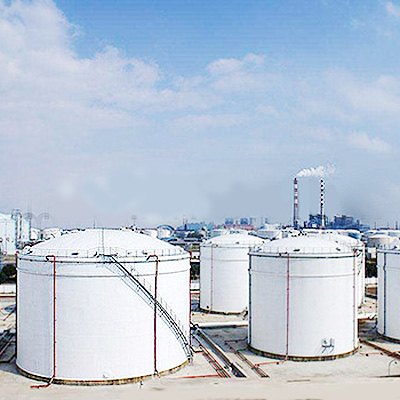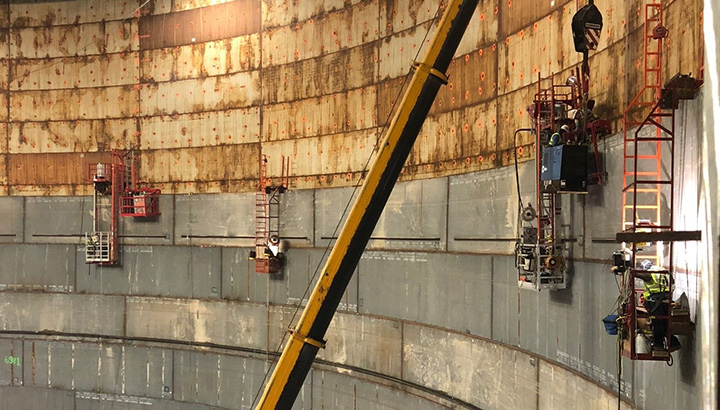Proven Tips for Conducting a Reliable API 650 Welding Inspection
Wiki Article
Understanding the Significance of Welding Evaluation in Top Quality Assurance Processes
Welding inspection is a necessary part of quality guarantee in construction and production. It guarantees that welds follow recognized requirements, which is critical for structural stability. Various assessment methods, from aesthetic to ultrasonic testing, help determine flaws early. This proactive approach not only protects against expensive repairs however additionally boosts security. Understanding the subtleties of welding evaluation can disclose its more comprehensive ramifications for market compliance and online reputation. API 650 Welding Inspection. What lies underneath the surface area of these methods?The Duty of Welding Evaluation in Quality Control
While welding is a vital process in numerous markets, its top quality and integrity hinge substantially on reliable evaluation techniques. Welding evaluation acts as a safeguard, guaranteeing that welds fulfill established standards and requirements. This process not just identifies defects yet likewise assesses the overall workmanship, thus contributing to the security and longevity of bonded structures. Evaluations are important to quality control, as they help avoid expensive failings and keep compliance with sector policies. By using skilled inspectors, organizations can boost their operational performance and maintain their track records. Furthermore, the understandings gained from examinations can notify continual enhancement, resulting in better methods and training for welders. Inevitably, welding assessment works as a critical web link in the quality control chain, making sure that every joint is dependable and qualified of withstanding the roughness of its desired application. This persistance is crucial for the honesty of framework and the safety and security of end users.Kinds Of Welding Inspections
Welding examinations incorporate a series of techniques developed to assess the quality and stability of welds. These examinations are necessary in making sure conformity with industry requirements and specifications. Usual sorts of welding assessments include aesthetic inspection, which enables prompt recognition of surface area abnormalities; ultrasonic screening, which makes use of high-frequency acoustic waves to find interior imperfections; and radiographic screening, utilizing X-rays or gamma rays to reveal weld stability underneath the surface area (API 650 Welding Inspection). In addition, magnetic bit screening is used to determine surface and near-surface interruptions in ferromagnetic materials, while color penetrant screening uses an approach for revealing surface-breaking defects. Each type of examination serves a particular purpose, adding to the overall quality control procedure. By employing a combination of these techniques, assessors can offer a thorough analysis of welding high quality, eventually ensuring the safety and integrity of bonded frameworksTypical Flaws Found in Welding
A selection of usual flaws can occur throughout the welding process, influencing the stability and efficiency of welded frameworks. These flaws consist of porosity, which includes trapped gas pockets within the weld, weakening its stamina. Fractures may additionally develop because of rapid air conditioning or incorrect joint layout, bring about possible failure under stress and anxiety. Incomplete combination occurs when there is not enough melting of the base metal, resulting in weak bonds. An additional flaw, damaging, involves the removal of base steel along the weld edge, producing a considerable structural weak point. In addition, excessive spatter can influence the appearance and necessitate further cleansing or repair service. Lastly, misalignment can bring about uneven weld grains, compromising the total quality. Recognizing these defects early via proper assessment strategies is important to assure the integrity and safety of welded elements, inevitably securing the performance of the whole structure.
Benefits of Routine Welding Assessments
Regular examinations play a substantial duty in preserving the quality and safety and security of welded frameworks, especially because of the common problems formerly outlined. These evaluations give a possibility to determine and fix concerns prior to they escalate into significant troubles, making sure architectural stability. By identifying defects early, companies can blog here lessen repair prices and stay clear of potential job delays.In addition, routine welding examinations improve compliance with market criteria and policies, fostering trust among stakeholders. This adherence not just safeguards the firm's credibility yet also contributes to improved safety and security for employees and the general public.
Moreover, constant assessments promote better training and skill advancement for welders, as responses from assessments can lead improvements. Inevitably, the advantages of normal welding assessments prolong beyond instant quality control, promoting long-lasting operational effectiveness and dependability in welded structures.
Finest Practices for Effective Welding Inspection
Executing finest methods in welding inspection is necessary for guaranteeing the highest standards of high quality and safety. Examiners must be effectively educated and certified, possessing a thorough understanding of welding strategies and products. Making use of sophisticated examination technologies, such as ultrasonic screening and radiography, improves the discovery of issues that may not be noticeable to the naked eye. Establishing a clear examination strategy, outlining the standards and frequency of evaluations, assurances uniformity and thoroughness.

Documenting all searchings for thoroughly is crucial for traceability and liability. Normal calibration of assessment tools assures accuracy, while maintaining a well organized and tidy work space lowers the risk of contamination. Additionally, fostering open communication amongst employee helps with the sharing of insights and advertises a society of top quality. By sticking to these best techniques, organizations can notably boost their welding quality control processes, ultimately bring about more secure and a lot more trustworthy items.

Regularly Asked Concerns
What Qualifications Are Required for a Welding Inspector?
A welding examiner typically needs accreditation from recognized organizations, such as the American Welding Culture (AWS) or the International Institute of Welding (IIW), together with pertinent experience and knowledge in welding procedures and high quality standards.Exactly How Usually Should Welding Inspections Be Carried Out?
Welding examinations ought to be done regularly, generally at various task phases, including before, throughout, and after welding procedures - API 650 Welding Inspection. The regularity usually depends on project specifications, regulatory requirements, and the complexity of the welds involved
What Are the Costs Connected With Welding Evaluations?
The expenses linked with welding assessments differ commonly, typically ranging from a few hundred to several thousand dollars, depending on factors like evaluation type, project dimension, and place, affecting general job budget plans and timelines.Can Welding Inspections Be Carried Out Remotely?
Yes, welding evaluations can be conducted from another location utilizing sophisticated technologies such as drones, cameras, and ultrasonic screening. These techniques allow assessors to examine weld stability without being literally present, improving performance and safety and security in different more helpful hints environments.Just How Do Inspection Results Influence Project Timelines?
Examination results can substantially go affect job timelines by determining flaws early, causing necessary rework or adjustments. Hold-ups may take place if inspections reveal problems requiring resolution, eventually affecting overall task completion and spending plan adherence.Welding inspections incorporate a range of approaches designed to evaluate the quality and stability of welds. Usual types of welding examinations include aesthetic inspection, which enables for prompt identification of surface abnormalities; ultrasonic screening, which utilizes high-frequency audio waves to spot internal flaws; and radiographic screening, using X-rays or gamma rays to reveal weld stability below the surface area. Regular evaluations assist in far better training and skill advancement for welders, as comments from assessments can assist improvements. Executing finest methods in welding evaluation is important for ensuring the highest possible criteria of quality and safety and security. Welding assessments ought to be carried out frequently, typically at numerous job stages, including prior to, during, and after welding procedures.
Report this wiki page